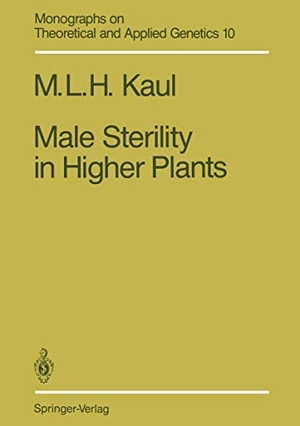Für statistische Zwecke und um bestmögliche Funktionalität zu bieten, speichert diese Website Cookies auf Ihrem Gerät. Das Speichern von Cookies kann in den Browser-Einstellungen deaktiviert werden. Wenn Sie die Website weiter nutzen, stimmen Sie der Verwendung von Cookies zu.
Cookie akzeptieren
Mohan L. H. Kaul
Male Sterility in Higher Plants
- Springer Berlin Heidelberg
- 2012
- Taschenbuch
- 1024 Seiten
- ISBN 9783642831416
" . . . . . . Nature has something more in view than that its own proper males should fecundate each blossom. " Andrew Knight Philosophical Transactions, 1799 Sterility implicating the male sex solely presents a paradoxical situation in which universality and uniqueness are harmoniously blended. It maintains a built-in outbreeding system but is not an isolating mechanism, as male steriles, the "self-emasculated" plants, outcross with their male fertile sibs normally. Both genes (nuclear and cytoplasmic) and environment, individually as well as conjointly, induce male sterility, the former being genetic and the latter nongenetic. Genetic male sterility is controlled either exclusively by nuclear genes (ms) or by the complementary action of nuclear (lr) and cytoplasmic (c) genes. The former is termed genic and the latter gene-cytoplasmic male sterility.
Mehr
Weniger
zzgl. Versand
in Kürze